Destroy All Monsters & Mike Kelley & Carey Loren - Grow Live Monsters (2007)
Monday, July 28, 2008








Grow Live Monsters is a selection from short home-made no-budget 8mm, super 8 and 16mm film fantasies made between 1971-1976. Most of the films revolved around a group of friends and the wall of noise they would create in basement cellars and in live performance. This was Destroy All Monsters, one of the most avant-garde 'bands' of all time. Featuring artists Niagra, Jim Shaw, Corey Loren and Mike Kelley, Destroy All Monsters is like nothing else. Ever. Psychedelic meets noise meets high and low brow art in a Midwestern blender. Say goodbye to your retinas." DVD Contents: "Grow Live Monsters (1971-1976)" - The early films of DAM; "Shake A Lizard Tail or Rust Belt Rump" - Montage of late-night TV adverts, techno club dancers, and Z grade monster clips; "Monsters Redux" - Outtakes, concert footage, band memorabilia, and photos; "DAM Invades Seattle" - Performance footage from Seattle, 2000; "Hometown Horrors" - Band photos and production stills. Total running time: approx. 145 minutes "Grow Live Monsters is a selection from short home-made no-budget 8mm, super 8 and 16mm film fantasies made between 1971-1976. Most of the films revolved around a group of friends and the wall of noise they would create in basement cellars and in live performance. This was Destroy All Monsters, one of the most avant-garde 'bands' of all time. Featuring artists Niagra, Jim Shaw, Corey Loren and Mike Kelley, Destroy All Monsters is like nothing else. Ever. Psychedelic meets noise meets high and low brow art in a Midwestern blender. Say goodbye to your retinas." DVD Contents: "Grow Live Monsters (1971-1976)" - The early films of DAM; "Shake A Lizard Tail or Rust Belt Rump" - Montage of late-night TV adverts, techno club dancers, and Z grade monster clips; "Monsters Redux" - Outtakes, concert footage, band memorabilia, and photos; "DAM Invades Seattle" - Performance footage from Seattle, 2000; "Hometown Horrors" - Band photos and production stills.
Available at KaraGarga.
at 3:26 PM
Alan Zweig - Lovable (2007)
Thursday, July 24, 2008

At some point, everyone has asked the question, why is it so hard to find love? In this final installment of the autobiographical trilogy that includes Vinyl and I, Curmudgeon, Alan Zweig reflects with disarming candour on why, if he longs for a partner and children, he is still single at mid-life.
Through intimate, heartfelt and often hilarious interviews with a series of diverse, smart and attractive single women, Zweig explores yearnings for the romantic myths of our culture and the difficulty of finding and sustaining relationships.
Some women have come to accept and prefer being alone, but many still dream of a future they can share. Rather than remaining the objective observer, Zweig approaches his female subjects as kindred spirits, sharing their vulnerability and openness. A perfect mixed tape of love songs provides the backdrop for this courageously candid look at love and longing. - Hot Docs
The last in the introspective trilogy that includes Vinyl and I, Curmudgeon. Available at KaraGarga.
at 3:42 PM
Alan Zweig - I, Curmudgeon (2004)
In this often very funny enquiry into crankiness, Toronto filmmaker Alan Zweig interviews notable curmudgeons like Fran Lebowitz, Harvey Pekar and Bruce LaBruce. Zweig wants to know what their frickin' problem is and, more importantly, whether it's the same as his. As in Vinyl, his equally irascible doc on record collectors, the endearingly dour filmmaker spends much of I, Curmudgeon spilling his guts directly to his camera and torturing himself with big questions that he can never answer satisfactorily. Zweig then confronts his subjects with the same questions, thereby making them even grouchier. (How grouchy? Andy Rooney is moved to kick Zweig out of his office.) Though I, Curmudgeon's meandering structure and incessant jump-cuts are irritants, they're also appropriate to the movie's abrasive, anti-social personality. Consider this a testament to the power of negative thinking. - Eye Weekly



 Available at KaraGarga.
Available at KaraGarga.
at 3:41 PM
Alan Zweig - Vinyl (2000)
This is a study of the joy and the madness of collecting things, in this case records. However, im pretty sure that regarless of what media you collect, you will recognize yourself in the individuals portrayed in here.
Nice vhs-rip, not as blurry as the screenshots below indicate.Available at KaraGarga.
at 3:39 PM
John Cage - Variations V (1965)
Wednesday, July 23, 2008
Already uploaded Variations VII, so here's the earlier, legendary work that premiered at New York's Philharmonic Hall (!) in 1965. This recording was from a german performance taped for television broadcast the next year. I'm listing John Cage as the director, since he's the mastermind here, but if you know Cage, you understand what a misnomer this is. "Collaborative" doesn't get the half of it: you've got Stan VanDerBeek's films, Nam June Paik's video, David Tudor, Gordon Mumma and John Cage on various tape machines rigged up by Robert Moog and Billy Kluver, Merce Cunningham and company doing movement, actual video here is somebody named Arne Arnbom, but don't know if editing was supervised by VanDerBeek, may have been. The video quality is poor, I've tried to preserve what little there was by not compressing too much - sound is great though. Full 50 min, including a 5 min opening commentary in german without subtitles. German speakers on KG - come lend a hand! - mediaburn(user on KaraGarga)
John Cage made «Variations V» in 1965 for the Merce Cunningham Dance Company. He and David Tudor settled on two systems for the sound to be affected by movement. For the first, Billy Klüver and his colleagues set up a system of directional photocells aimed at the stage lights, so that the dancers triggered sounds as they cut the light beams with their movements. A second system used a series of antennas. When a dancer came within four feet of an antenna a sound would result. Ten photocells were wired to activate tape-recorders and short-wave radios. Cecil Coker designed a control circuit, which was built by my assistant Witt Wittnebert. Film footage by Stan VanDerBeek and Nam June Paik's manipulated television images were projected on screens behind the dancers.
The score was created by flipping coins to determine each element and consisted of thirty-five «remarks» outlining the structure, components, and methodology. The specific sound score would change at each performance as it was created by radio antennas responding to the dancers' movements.
The photocells were located at the base of the five-foot antennas placed around the stage. Cage, Tudor, and Gordon Mumma operate equipment to modify and determine the final sounds.



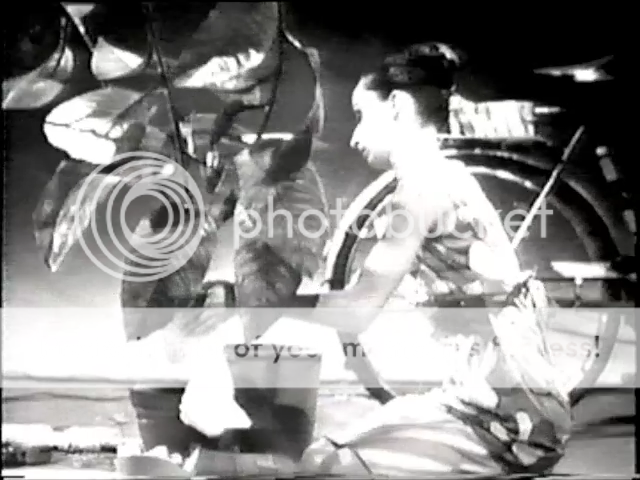
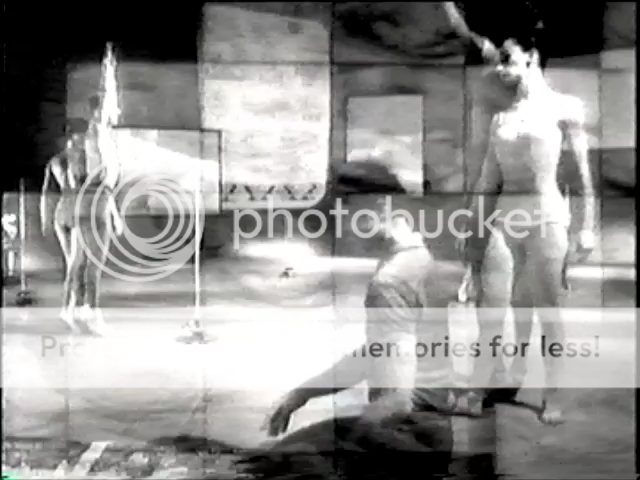
 Available at Karagarga.
Available at Karagarga.
Ps. check out sbmp3b if you want to check out a lot of Mark Leckey music projects.
at 12:30 PM
Robert Smithson - Hotel Palenque (1969-72) & Neville Wakefield - Yucatan Is Elsewhere, On Robert Smithson's HOTEL PALENQUE
Sunday, July 13, 2008



Robert Smithson's 1969 lecture published in Parkettart alongside an essay by Neville Wakefield. Download it via mediafire right here or at UbuWeb.
at 3:13 PM
Christian Marclay - Guitar Drag (2000)
Monday, July 7, 2008
The 14-minute video Guitar Drag, 2000, shows an amplified Fender guitar attached to a rope being pulled behind a pick-up truck. As the guitar drags across back roads and dirt trails, it produces a range of cacophonous musical sounds that often correlate to what is seen. Guitar Drag explores the collected mythologies of the guitar, the rural South and the truck, and Marclay evokes such disparate associations as rock-and-roll guitar smashing and the history of lynching in the South.




Available at KaraGarga.
at 12:24 AM
Leosh Janachek - On the Way to the House of the Dead (1930)
Friday, July 4, 2008
Not to be confused with the truly awful "House of the Dead," this is an OPERA by the Moravian (Czech) composer Leos Janacheck based on the short story by Fyodor Dostoyevsky and conducted by the brilliant Pierre Boulez using the Schoenberg choir.
Why do I go into the dark, frozen cells of criminals with the poet of Crime and Punishment? Into the minds of criminals and there I find a spark of God. You will not wipe away the crimes from their brow, but equally you will not extinguish the spark of God. Into what depths it leads - how much truth there is in his work!
See how the old man slides down from the oven, shuffles to the corpse, makes the sign of the cross over it, and with a rusty voice sobs the words: 'A mother gave birth even to him!'
Those are the bright places in the house of the dead.
From the House of the Dead (Z Mrtvého Domu in Czech) is an opera by Leoš Janáček, in three acts. The libretto was translated and adapted by the composer from the novel by Dostoyevsky. It was the composer's last opera, premiered on 12 April 1930 in Brno, two years after his death.
Janáček worked on this opera knowing that it would be his last, and for it he broke away from the habit he had developed of creating characters modeled on his love interest Kamila Stösslová (although the themes of loneliness and isolation can clearly be seen as a response to her indifference to his feelings). There are, in fact, almost no female characters, and the setting, a Siberian prison, offers up a large ensemble cast instead of one or several prominent leads. There is no narrative to the piece as a whole, but individual characters narrate episodes in their lives, and there is a "play-within-a-play" in Act 2.
From the House of the Dead was virtually finished when Janáček died. Two of his students, believing the orchestration was incomplete, "filled out" large portions of the score, as well as adapting the ending to be more optimistic in tone. In addition to the work of Bretislav Bakala, Ota Zitek made changes to the text and sequence of events in the opera.[1] Decades later, a version closer to the composer's intentions superseded that version, and is most often heard today. Some productions, however, still use the ending adapted earlier, as it lessens the bleakness of the story.
The vast orchestra for which this opera is written includes chains (as a percussion instrument), to evoke the sound of the dead.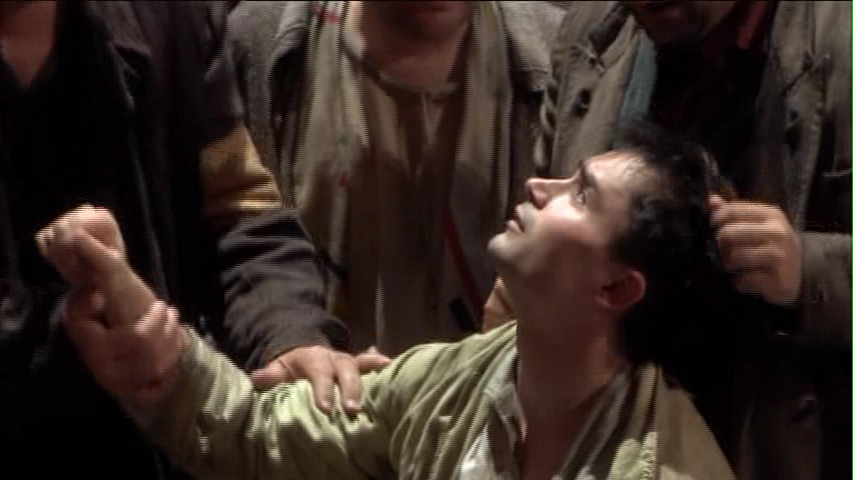



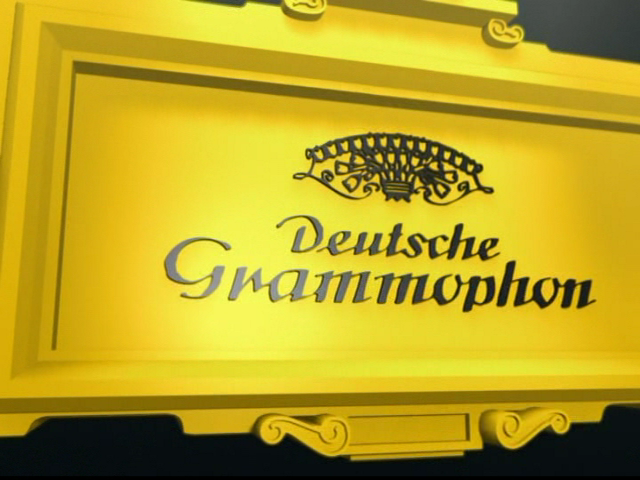
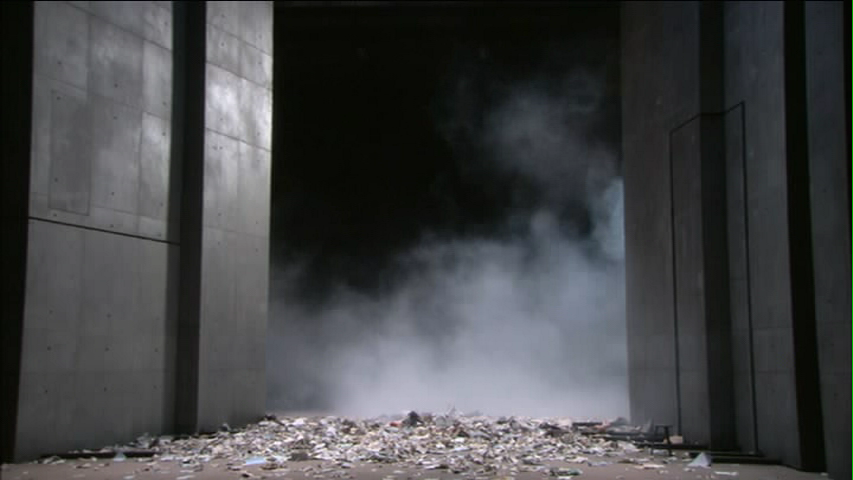

This is the Deutsche Grammaphone dvd recording, with both 5.1 dolby and normal stereo sound, as well as all the menu extras including five short making of features. The 7.5gb dvd here compressed to 4.3 for burning.
Chéreau rehearsing Skuratov's narration
Chéreau and Boulez on Dostoyevsky's text
Thieu Niang working on the two pantomimes
Boulez and Chéreau on the position of the chorus in Act III
Boulez rehearsing the Mahler Chamber Orchestra
Available at KaraGarga.
at 3:25 AM
Dominique Gonzalez-Foerster - Parc Central (2006)
Thursday, July 3, 2008
A collection of 11 short poetic psycho-geographic portraits of cities and spaces from artist Dominique Gonzelez-Foerster, who's cinematic 2007 solo show at Musée dArt moderne de la Ville de Paris http://www.e-flux.com/shows/view/4008 will be supplemented in 2008 by the Unilever commission for the Turbine Hall of London's Tate Modern (joining Carsten Holler's slides, Olafur Eliason's sun, and Doris Salcedo's crack amongst many other prestigious past projects).
Ranging from the revisiting of a scene of Ming-Liang Tsai's 'Vive l'Amour' through the eyes of its protagonist, to a ticker-tape parade in Buenos Aires, from a reflection on the filmic qualities of Brasilia,to an observation of the observers of the 1999 eclipse in Paris. All soundtracked by a sensitive balance of field-recordings and carefully chosen delicate music.
A review of the work Riyo, included on DVD here.
This collection of films from cities across the globe provides further evidence of Gonzalez-Foerster's unmistakable sense of urban ambience and tropical melancholia. In a conversation between the artist and Jacques Ranciere published in Art Press, the philosopher, reflecting on the dialogue between East and West in her work, observes, "What is interesting is what they over there have done with what they borrowed from us here. You don't get that here, maybe because we have the idea that there are no more journeys left." That may be the case, but after seeing Gonzalez-Foerster's films I want to go places: Rio de Janeiro, Brasilia, Taipei, and of course Japan, though I'm not sure if her Japan really exists or whether it's a semiotic fantasy after Roland Barthes.
- Daniel Birnbaum, Artforum, 2006
"Parc Central" est composé de 11 films qui offrent un voyage visuel, sonore et poétique à travers 11 villes traversées par l'artiste. Fascinée par la ville, l'espace et l'urbanisme, Dominique Gonzalez-Foerster développe depuis plusieurs années le concept de "modernité tropicale", à partir de la cohabitation et de la confrontation entre architecture et végétation. C'est autour de cette recherche qu'elle a conçue "Parc Central"
- MK2 DVD description
Available at KaraGarga.
at 7:42 PM
Ken Jacobs - Window (1964)
Tuesday, July 1, 2008
Window (1964) 16mm, color, silent
The moving camera shapes the screen image with great purposefulness, using the frame of a window as fulcrum upon which to wheel about the exterior scene. The zoom lens rips, pulling depth planes apart and slapping them together, contracting and expanding in concurrence with camera movements to impart a terrific apparent-motion to the complex of the object-forms pictured on the horizontal-vertical screen, its axis steadied by the audience's sense of gravity. The camera's movements in being transferred to objects tend also to be greatly magnified (instead of the camera the adjacent building turns). About four years of studying the window-complex preceded the afternoon of actual shooting (a true instance of cinematic action-painting). The film exists as it came out of the camera barring one mechanically necessary mid-reel splice. --K. J.

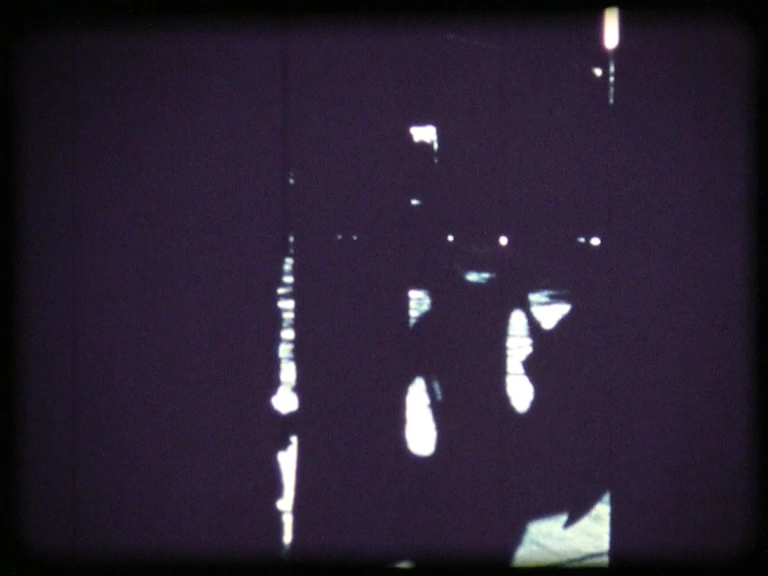
Ken Jacobs was born May 25th, 1933 in Williamsburg, Brooklyn. His family background was that of a broken home, with a father who didn't care about him, and a mother who passed away when he was seven. His childhood life could be characterized, as he would call it, " Disastrous but typical, bequeathing me a social disgust and anger that I have cultivated, refined, monumentalized, and I am gagging on." His grim childhood had taught him to be a stronger person on the outside.
Aside from his early childhood difficulties, at the age of sixteen he had the opportunity to go to the Museum of Modern Art. There, he took a keen interest in various filmmakers, which then inspired him to write some of his own movie scripts. Also, he developed a love for art and painting. He attended the high school of Industrial Arts and often visited the film screenings at the Museum of Modern Art in New York.
He served at the US Coast Guard. In 1955 he continued to study painting in New York, and in 1956 he studied with Hans Hoffmann.
Also in 1956 he befriended the filmmaker Jack Smith and began to work on his first films and first attempts in Silhouette Theater. In 1956, Jacobs put together a film called Orchard Street. Over the next couple of years, with the help of fellow filmmaker and classmate Jack Smith, his work was finally acknowledged. Smith, being a hopeful actor, starred in Jacob's film Blonde Cobra as well as a few other films.
He founded the Millennium Film Workshop in New York. He then taught film studies at St. Johns University. In 1969 he founded the film department at the State University of New York in Binghamton together with Larry Gottheim. From 1971 to the present he has been professor of film in Binghamton. In 1986 he was a guest of the DAAD (Berlin Artist's Program). In 1996 his work was shown in a comprehensive film retrospective in the Museum of Modern Art in New York.
Available at KaraGarga.
at 11:12 AM
Paul Sharits - Ray Gun Virus (1966)

Ray Gun Virus (with sound!)
1966
According to artist, sound is to be turned to max volume.
Although affirming projector, projection beam, screen, emulsion, film frame structure, etc., this is not an "abstract film"/projector as pistol/time-colored pills/yes=no/mental suicide and then, rebirth as self-projection. "... just colors and strobe ... 'light-color energy patterns (analogies of neural transmission systems) generate internal color-time shape and allow the viewer to become aware of the electrical-chemical functionings of his own nervous system' ... It's true." - David Curtis, International Times "RAY GUN VIRUS is a work in which no images appear yet one can get pure identity on film. ... projected film itself makes the viewer aware of where he stands. RAY GUN VIRUS is not so-called 'Psychedelic Cinema' but even more and goes beyond it through Sharits' bright clarification of the media." - Takahiko Iimura, Film Art Exhibition: Fourth Int'l Experimental Film Competition, Knokke-Le-Zoute; "Twenty Years of American Personal Film" anthology, National Museum of Modern Art, Tokyo, 1966. Collections: Museum of Modern Art, NY; Royal Archive of Belgium.


 Available at KaraGarga.
Available at KaraGarga.
at 11:08 AM